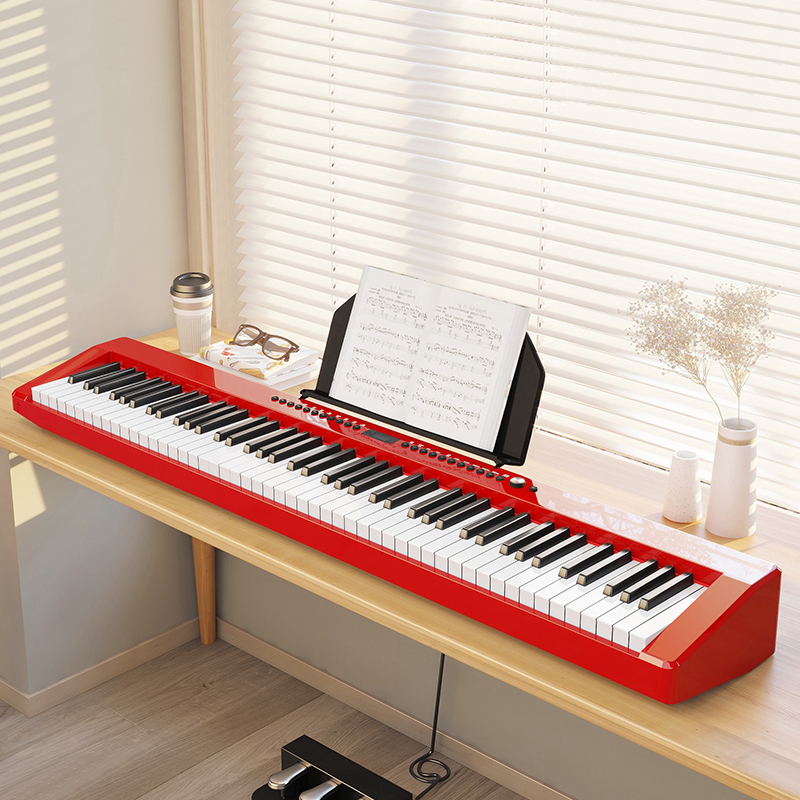Understanding the Components of a Piano Keyboard
A piano keyboard is composed of several intricate parts, each playing a crucial role in its overall functionality. The keys themselves, typically made from wood and covered with materials such as ivory, plastic, or composite, are subject to wear and tear. The keybed supports the keys, while the action mechanism transfers the motion from the keys to the hammers, which then strike the strings. Each of these components requires careful attention to ensure the longevity of the keyboard.
Factors Influencing the Lifespan of a Piano Keyboard
1. Quality of Materials
The quality of materials used in the construction of a piano keyboard is paramount. High-end pianos, often crafted with superior materials such as hardwoods and premium key coverings, tend to have a longer lifespan. Conversely, pianos made with lower-quality materials may degrade faster, especially under heavy use.
2. Usage and Playing Frequency
Regular use of a piano can lead to faster wear and tear. Pianists who practice daily may notice signs of wear on the keys and action mechanism more quickly than those who play occasionally. Concert pianists or institutions where pianos are played intensively may need to consider more frequent maintenance and potential parts replacement.
3. Environmental Conditions
Pianos are sensitive to their environment. Humidity and temperature fluctuations can cause wood to expand or contract, leading to misalignments and damage over time. Ideal conditions for a piano include stable humidity levels (around 42-45%) and temperatures between 68-72°F (20-22°C). Using a hygrometer and maintaining climate control can significantly extend the lifespan of a piano keyboard.
4. Maintenance and Care
Regular maintenance is crucial for prolonging the life of a piano keyboard. This includes tuning, cleaning, and action regulation. Professional technicians should inspect and service pianos at least once or twice a year, depending on usage. Proper care prevents issues such as stuck keys, uneven touch, and deteriorating keytops.
Signs That a Piano Keyboard Needs Attention
Identifying the signs of wear and tear early can help mitigate more extensive damage. Some common indicators include:
- Sticking or unresponsive keys: Keys that do not return to their resting position promptly may indicate issues with the action mechanism.
- Uneven key surfaces: Over time, the key surfaces may become uneven or discolored, especially if they are made of lower-quality materials.
- Noisy keys: Excessive noise when playing can be a sign of wear in the action mechanism or keybed.
- Visual cracks or chips: Physical damage to the keys, such as cracks or chips, often suggests the need for repairs or replacement.
Extending the Lifespan of Your Piano Keyboard
1. Regular Cleaning
Dust and dirt can accumulate on and between the keys, affecting their functionality. Using a soft, dry cloth to regularly clean the keys is essential. Avoid using harsh chemicals or excessive moisture, as these can damage the key surfaces and underlying wood.
2. Climate Control
Maintaining a stable environment is critical. Dehumidifiers or humidifiers, as well as air conditioning, can help regulate the room conditions where the piano is kept. This prevents wood warping and keeps the action mechanism in good working order.
3. Professional Servicing
Engaging a professional piano technician for regular servicing ensures that all components of the keyboard and action mechanism are in optimal condition. Technicians can perform essential tasks such as tuning, voicing, and action regulation to keep the piano sounding and feeling its best.
4. Proper Playing Technique
Teaching proper playing techniques can also contribute to the longevity of a piano keyboard. Gentle, controlled playing, rather than forceful or harsh key strikes, reduces unnecessary stress on the keys and action mechanism.
Replacing and Restoring Piano Keyboards
Despite the best care, there may come a time when parts of the piano keyboard need to be replaced or restored. High-quality pianos are often worth the investment in replacement parts due to their overall value and performance. Restoring a piano keyboard typically involves:
- Replacing keytops: Modern materials such as high-grade plastic or synthetic ivory can replace worn or damaged keytops.
- Rebushing keys: This process involves replacing the felt bushings that guide the keys, ensuring smooth and quiet key movement.
- Action mechanism overhaul: Over time, the action mechanism may need a complete overhaul to replace worn parts and restore the original touch and responsiveness.
Our company is a comprehensive enterprise ingratiating research and development, design, production, sales and service. We produce several kinds of electronic piano for all over the world.
If you want to know more details, add my
whatsapp: +86 17706062278. Gmail: anngood88day@gmail.com





